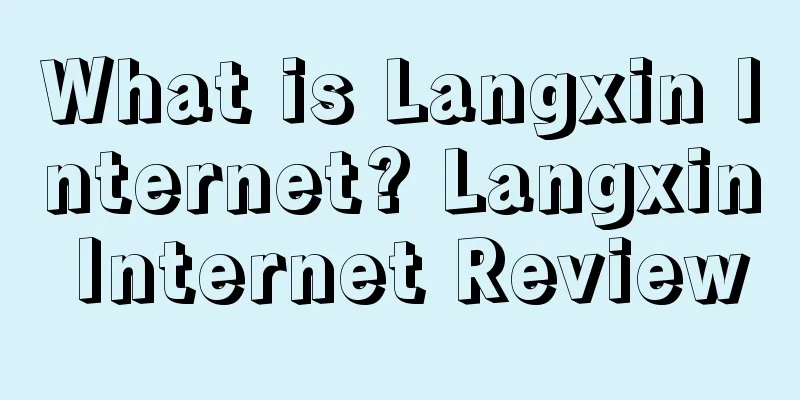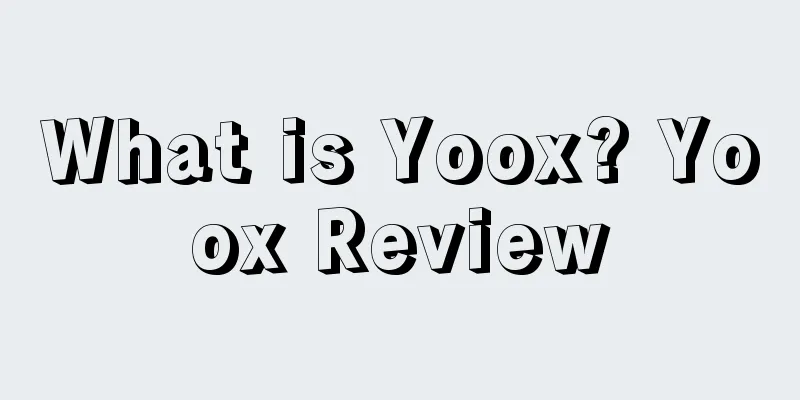A brief discussion on the application of cross-border B2B, B2C, M2C, C2B and C2F in the transformation and development of traditional enterprises

|
What is the "Wen Dao Seminar" The name of the group comes from Tao Te Ching: "The superior man, when he hears the Tao, diligently practices it; the average man, when he hears the Tao, sometimes practices it and sometimes does not; the inferior man, when he hears the Tao, laughs at it; if he did not laugh, it would not be the Tao." This group pursues pragmatic and positive interactive sharing of knowledge and experience, and looks forward to cross-border e-commerce people encouraging each other's growth . 「Activity content record」 After reading my title, everyone knows that what I am going to discuss today is a macro-level thing related to bosses, management and corporate direction.
We have been engaged in foreign trade e-commerce since 2007. We have shifted from a technical type to a management type, and step by step transformed the company from a single cross-border B2B business to an e-commerce company that integrates multiple businesses of cross-border B2B+B2C+M2C+C2B and jointly promotes development. All our orders are 100% from the Internet!
Among the companies in our industry, each company has its own characteristics. There are professional production companies, professional B2B companies, B2C companies, or composite companies. The survival and development of companies always have their own unique and excellent aspects to support their survival and growth! So give a thumbs up to every company! Whether we are small or medium-sized enterprises!
Below I would like to share some of our company’s experiences, experiences and reflections over the past ten years. They may not be the most successful or the most suitable for you, but perhaps some of them can give you some feelings and inspiration. Before sharing, let me show you some videos of our intelligent assembly line workshops in the clothing industry:
Why do we want to build this intelligent workshop? From the corporate B-end, to the C-end, and then to the offline production link? Of course, first of all, this has a lot to do with our company's strategic planning, and then with the current social development trend, Internet integration and order production needs. I think there are about the following points worth doing:
Of course, we don’t produce 100% ourselves. We complete 50% of the orders ourselves, and the rest are completed by the supply chain resource factories.
We are truly grateful for the progress and development of the times, which have allowed us to gradually transform from a pure B2B foreign trade company to one with multiple business units jointly promoting development, including B2B+B2C+M2C+C2B, and vertically transform from multiple product categories to a single product, and grow from a zero to a medium-sized enterprise with a scale of 100 million.
C2B&C2F: Consumers to merchants and manufacturers, consumers decide production
Our intelligent factory can produce everything that every consumer and customer needs quickly, in small batches, and in a customized manner. This is the trend of the future, and some of my friends have already been planning it two years ago. For a piece of clothing, you can choose different fabrics, colors, styles, patterns, and even upload your own graffiti to the merchant to help you customize the production. The minimum order quantity can be as small as one piece! And the delivery time can help you customize it within 24 hours, and it will be delivered to you within 3 days! And the production cost is not much different from mass production. In fact, manufacturers have already started customized production for complex products including cars. I went to a 4S store last week and saw a sales consultant holding a tablet and clicking on the screen: there are more than a dozen different exterior colors, more than a dozen different leather colors and materials, and more than a dozen different personalized interiors, including engine configuration, interior color, audio composition, etc. You can choose what you want and finally record it in the pattern to create a personalized car of your own!
B2B+ B2C+M2C: Simply understood as wholesale and retail, no matter it is a foreign trade company, factory or individual, no matter it is a B-end customer or a C-end customer.
Looking at the development history of the foreign trade industry, before the emergence of B2C, the vast majority of companies were B2B, or F2B (factories to foreign trade companies). Even now, it has not disappeared, but the channels have changed and the forms have become more diversified.
During the past ten years of development of our company, our B2B department has experienced a single comprehensive wholesale platform consisting of hundreds of thousands of SKUs. Moving forward, with the popularization of the Internet and the development of globalization, it has gradually evolved into a segmented single-variety category vertical single-variety one website platform, and the company's multi-category promotion platform. Simply put, one variety, one segmented category, one website is promoted.
As a cross-border foreign trade company, we have accumulated rich supply chain resources. With one factory, one category, one website, three salesmen and one team, we can be regarded as a small company!
This is how the team system works! For example, in our clothing category, a designer (R&D) + a marketing specialist (sales) + a purchasing specialist (purchasing) form a team responsible for a sub-category. All the people in this team are the center and the boss. Our B2B and B2C teams can share resources, such as art design, logistics, etc.
Many friends around me often tell me that after we started B2C, we cut off the B2B department. In fact, why would you cut off a profitable department? It must be because you didn’t operate it well and it’s not profitable! B2B and B2C are actually complementary, helping each other and promoting each other. We have a deep feeling in the actual operation! We think cross-border B2B is very easy to do. With the development of the Internet, orders are fragmented and miniaturized. In terms of collection, we can always collect full payment before shipping. Especially for small and medium-sized orders, there are rarely 30-day settlements, LC settlements, etc. The money earned is immediately in hand, and there is no need to prepare inventory or pressure funds. Moreover, B2B orders can also have online "One-stop" guaranteed payment like B2C, and collection of shipments.
Small and medium-sized orders are similar to small wholesales, with high profits. In our company, the average gross profit margin reaches 50%!
Now many B2B order customers come from overseas customers similar to our B2C customers. They adapt to local conditions and are your best overseas "designers" and "experiencers". Why? For example, our American B2C customers who make swimsuits have millions of fans on INSTGRAM. They will develop new styles before the peak sales season. We will help them make patterns and send them to local models for trial wear. We will propose modification plans, including color, style, size, wearing comfort, etc. After the modification, after a small batch of 100 PCS, 200 PCS market testing and evaluation, we will purchase and order according to market demand. This is called small batch customized production, which not only requires our B2B sales staff to respond quickly and cooperate quickly, but also requires our production to respond quickly, produce quickly, adapt quickly, and have high quality! This is one of the reasons why we set up our intelligent production workshop. We can produce 10 different styles on the same production line at the same time, with orders as small as 1 piece. It is no longer necessary to wait until the end to see the finished product like in the traditional clothing industry!
We can also analyze customer demand and hot-selling styles based on the big data statistics of the workshop system, and equip them with corresponding fabric stocks, cut the corresponding fabrics and make finished products. Once an order comes in, we can call up the cutting pieces online and deploy personnel of different types of work to do different styles in the same process! Quickly produce finished products! We are also equipped with automatic cutting beds. As long as the paper pattern is ready (there are paper patterns for those who have made the pattern before), the semi-finished products can be cut online immediately!
At the same time, the B-end is complementary to the C-end. We can simultaneously analyze the needs of foreign customers for orders, styles, and hot-selling products. The C-end designers can directly "take it" and make changes to the samples that the B-end customers have tried before, and put their own trademarks on them! You know! No more blind and wasteful development!
The product line of the C-end can also be uploaded to the B-end platform, and the B-end products can be promoted in the C-end way, so that customers can see the most popular styles and products. Moreover, through mass production, we can greatly reduce procurement costs, production costs, and management costs, which has a huge economic effect! Now many pure B-end companies or B-end factories are far from managing e-commerce platforms, products, descriptions, and promotion operations when doing the B-end route! If you can promote the B-end with the vision and operation of the C-end, you will definitely get twice the result with half the effort!
With good products, flexible production and intelligent production platforms, salesmen can do sales with ease, and sales have doubled! Can the performance still be bad? Can the income still be bad?
The following are some modification suggestions and processes from our foreign B2C customers when developing samples for our domestic B2B team, as well as real-life model try-ons:
The following is a hot-selling swimsuit we launched in B2C two months ago. It would have taken 30 days to produce 50,000 pieces. However, due to its popularity, it was completed in 10 days through our smart factory production and powerful supply chain resource integration, and the goods were successfully delivered to the end consumers on time. F2C: factory to C-end customers.
The advantage of our factory is that we know how to persist. We can work tirelessly on one product or one type of product and upgrade it. Our factory’s focus on making products is the advantage and characteristic of our factory! This is invaluable for the C-end! E-commerce has become more and more important for production factories. Even many factories around us have their business derived from e-commerce, such as Alibaba, official website, AMAZON B-end, and C-end sales. Now many traditional factories also say they want to transform into e-commerce and build brands. Many bosses get excited and build official websites like tycoons, spending tens of thousands or hundreds of thousands of yuan: on Alibaba platform, high-end, hundreds of thousands of yuan a year in advertising fees, on AMAZON EBAY platform, what to do if you have never done it before? All kinds of training first!
Transforming from a traditional industry to an e-commerce enterprise, directly serving C-end enterprises, what you ultimately want to achieve is your own "brand dream", an Internet brand. But before doing this, have you considered the following questions:
Transformation is painful and long! If the transformation is successful, it will be mainly based on e-commerce, and even become a new generation of Internet brand enterprises! Go with the flow!
C2B: If B2B is about OEM brands and agents, and B2C and F2C are about pseudo brands and Internet brands, then C2B is the department and era of de-branding and personalized customized production! And this era will soon arrive!
We know that branding means printing the brand on the product to promote your own brand or that of your clients. C2B is completely de-branded. The only thing that exists are the clients’ personalized patterns and texts. So what you’ll see more on the streets in the future are personalized clothes and bags!
Talk about team management
In the process of transformation and upgrading from traditional enterprises to Internet enterprises, it is inevitable to encounter team management issues, such as assessment, personnel, finance, commission, partners, capital connection, brand management, etc. Due to time constraints, let's briefly talk about our team management, operation and assessment, as well as some issues related to the company's direction .
Just now we talked about the team management of our company, which is a group system, a company system, and a partnership system. There are about three to five people for one lady, whether it is a B2B team, a B2C team, or a C2B team. Flexible, not bloated, fast response, fast growth, fast growth, and easy management!
Don't simply give employees a fixed salary. In our company, whether it is the B-end or the C-end, the basic salary of salesmen is very low, and the basic salary is floating. The commission is very high and very fierce. Treat them as partners. For those who have worked for more than one year, virtual equity incentives are implemented. The following are some of the dividend regulations of our company (part):
Talk about the boss's pattern and direction
Our startups are generally divided into four stages: primary stage, growth stage, maturity stage, and expansion stage
For example, the initial stage requires our company to be able to provide products or services that meet market demand and formulate correct and feasible marketing strategies to find the right direction and precise positioning for our company! The positioning direction and thinking of bosses at different stages are different, but there are the following points that we will never change :
Therefore, the best way is to keep up with the times! Keep learning, growing and improving! Be a learning entrepreneur or employee!
Understand sharing and pattern
To achieve others is to achieve yourself! I am willing to watch my employees and friends grow up, create a good entrepreneurial platform, provide it to employees, let them grow up in a team, company, and atmosphere with system, guarantee, and culture, and be willing to share the fruits of labor! Let employees enjoy the fruits together, and be willing to see their growth, including the growth of income and career! |
>>: Amazon traffic classification and value maximization
Recommend
Amazon US Prime orders exceeded 1 billion in the 2018 year-end peak season, and the best-selling products are as follows...
Amazon announced record sales results for the 2018...
What is Email Hunter? Email Hunter Review
Email Hunter is an email search software that can ...
What is PingPong Joy? PingPong Joy Review
PingPong Joy is an in-app purchase payment solutio...
What is Trade B2B? Trade B2B Review
TradeB2B.net is a world-renowned B2B website direc...
What is Catch? Catch Review
Catch is a new mobile shopping app launched by eBa...
What is feedback? Feedback review
Store reviews refer to the customer's evaluati...
What is ECPlaza.net? ECPlaza.net Review
EC Plaza was founded in 1996 and is the world'...
What is Blackstone Group? Blackstone Group Review
Blackstone Group, also known as Blackstone Group, ...
The craze of “wild consumption” helps Chinese products go overseas, and ERKE tops the Amazon new product sales list!
▲ Video account attention: cross-border navigation...
[Must-read] Amazon tools that can improve work efficiency!
text 1. When researching a product, you need to q...
What is ShopGo? ShopGo Review
ShopGo is a local e-commerce service system in the...
Keyword search volume exceeds 10,000, these wedding products are the best-selling
For cross-border e-commerce sellers, the quality ...
Many common words have been registered as trademarks, and some sellers have been affected!
Author | Shuangmu@ Disclaimer | This article is co...
Comparing Walmart W+ membership and Prime membership, which one has greater consumption potential?
It is learned that on February 28, research instit...
What is Global Logistics? Global Logistics Review
Global Logistics ("Amazon Logistics+") i...









